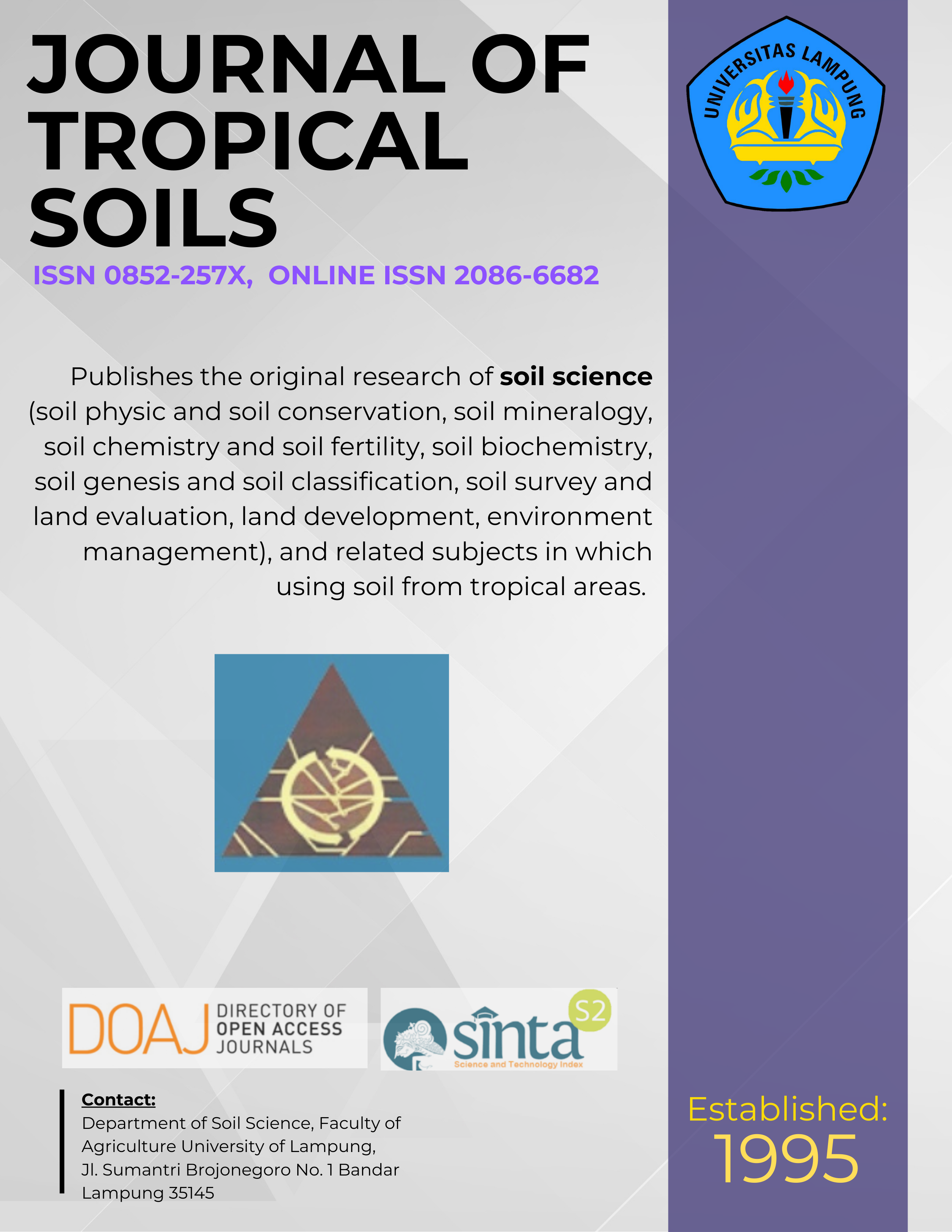Characteristics of Tropical Drained Peatlands and CO2 Emission under Several Land Use Types
Main Article Content
Abstract
Converting of tropical rain forest into plantation and agriculture land uses has been claimed as a main factor that affects to global warming and climate change. In order to provide a comprehensive information of the issue, a field observation on peat properties in relation to CO2 emission under several land use types had been done at Lubuk Ogong Village, Pelalawan District, Riau Province from May 2011-April 2012. Five land use types, namely A. mangium, bare land, oil palm, rubber, and secondary forest have been selected in the study site. Observations were made for chemical and physical properties, above and below ground C-stock and CO2 emissions. The results showed a higher variation of peat depth and a below ground C-stock was almost linearly with a peat depth. Below ground C-stock for each land use was around 2848.55 Mg ha-1, 2657.08 Mg ha-1 5949.85 Mg ha-1, 3374.69 Mg ha-1, 4104.87 Mg ha-1 for secondary forest, rubber, oil palm, bare land, and A. mangium, respectively. The highest above ground C-stock observed on a secondary forest was 131.5 Mg ha-1, followed by the four years A. mangium 48.4 Mg ha-1, the 1-2 years A. mangium 36.6 Mg ha-1, and the 4 years A. mangium 34.4 Mg ha-1. While, CO2 emissions in the study sites were 66.58±21.77 Mg ha-1yr-1, 66.17±25.54 Mg ha-1yr-1, 64.50±31.49 Mg ha-1yr-1, 59.55±18.30 Mg ha-1yr-1, 53.65±16.91 Mg ha-1yr-1 for bareland, oil palm, secondary forest, A. mangium, and rubber, respectively.
[How to Cite: IG Putu Wigena, Husnain, E Susanti, and F Agus. 2015. Characteristics of Tropical Drained Peatlands and CO2 Emission under Several Land Use Types. J Trop Soils 19: 47-57. Doi: 10.5400/jts.2015.20.1.47]
[Permalink/DOI: www.dx.doi.org/10.5400/jts.2015.20.1.47]
Downloads
Article Details
Section
License for Authors
Authors who publish with this journal agree to the following terms:
- Authors retain copyright and grant the journal right of first publication with the work simultaneously licensed under a Creative Commons Attribution License that allows others to share the work with an acknowledgement of the work's authorship and initial publication in this journal.
- Authors are able to enter into separate, additional contractual arrangements for the non-exclusive distribution of the journal's published version of the work (e.g., post it to an institutional repository or publish it in a book), with an acknowledgement of its initial publication in this journal.
- Authors are permitted and encouraged to post their work online (e.g., in institutional repositories or on their website) prior to and during the submission process, as it can lead to productive exchanges, as well as earlier and greater citation of published work (See The Effect of Open Access).
License for Regular Users
Other regular users who want to cite, distribute, remix, tweak, and build upon author’s works, even for commercial purposes, should acknowledge the work’s authorship and initial publication in this journal, licensed under a Creative Commons Attribution License.

